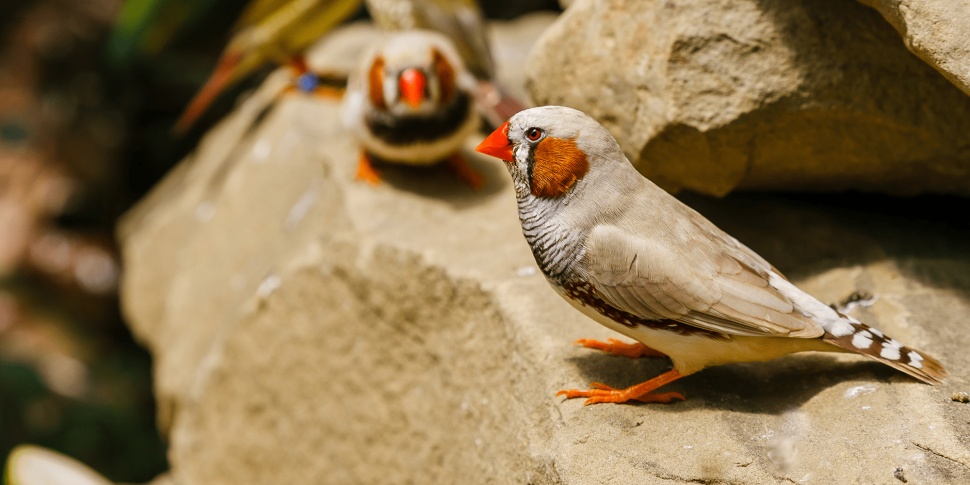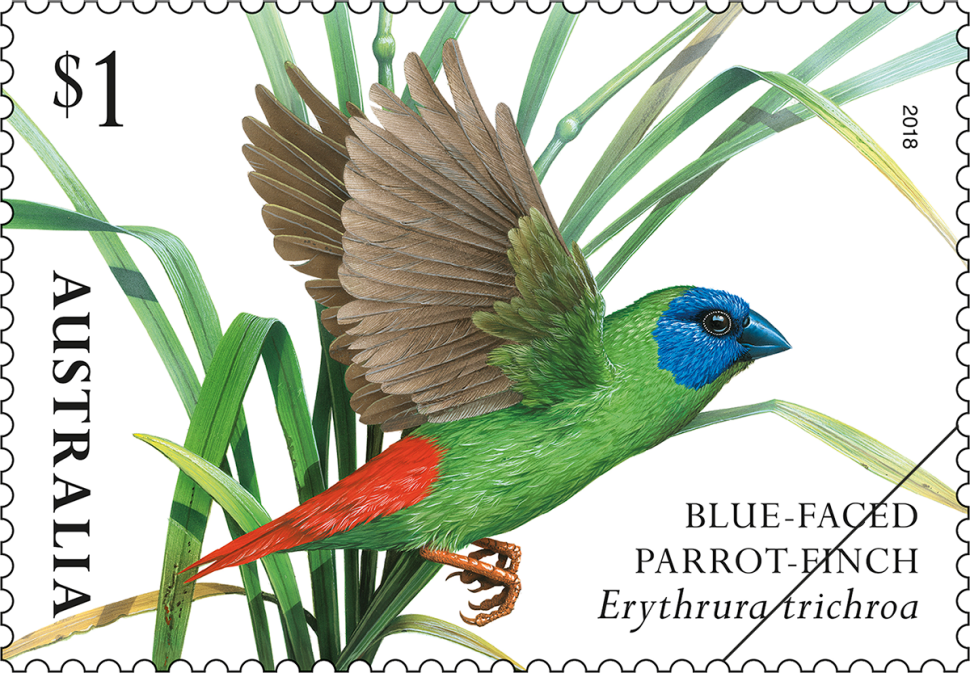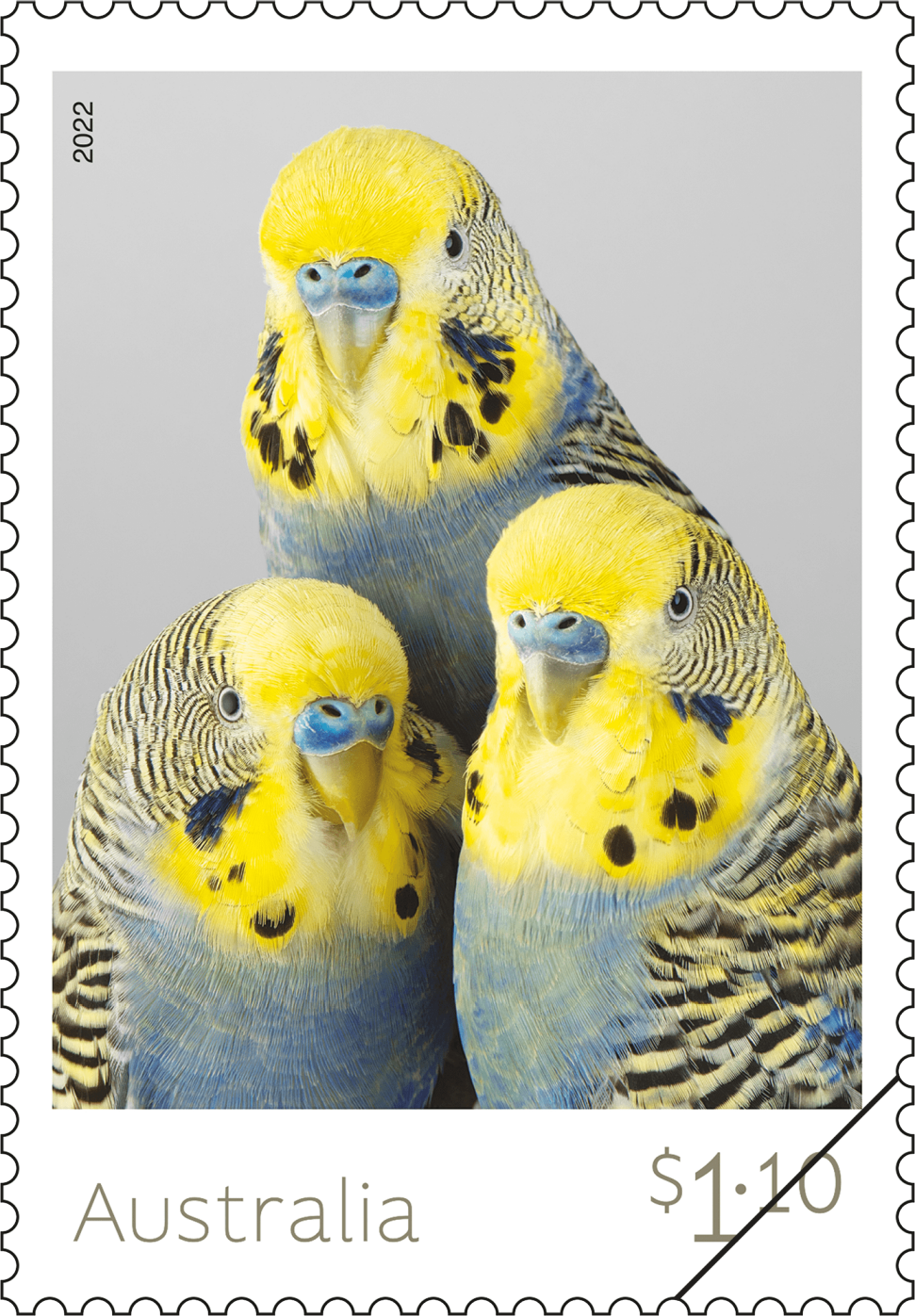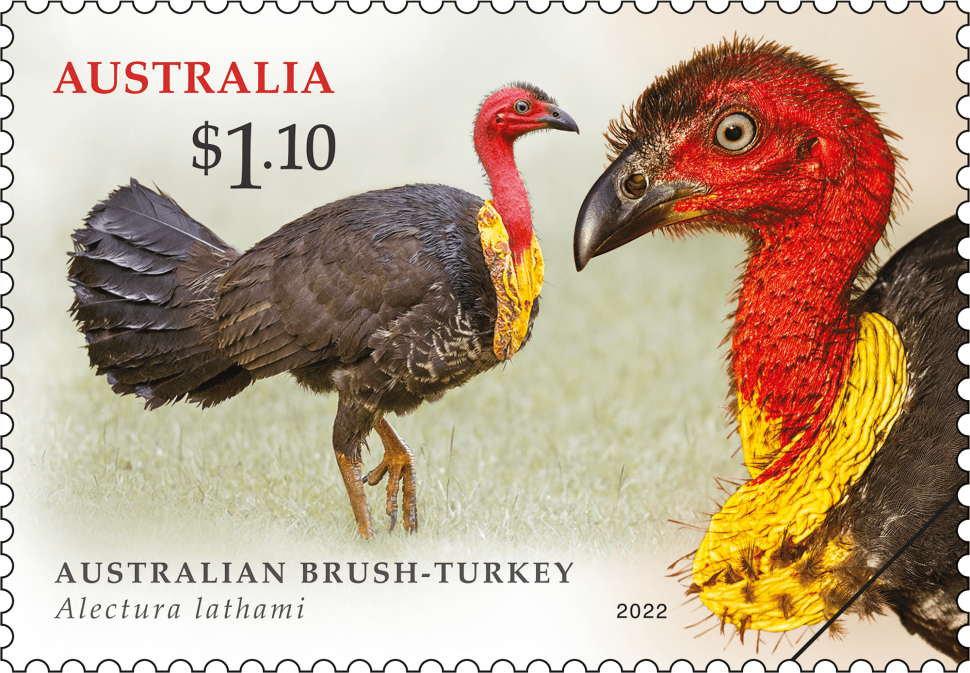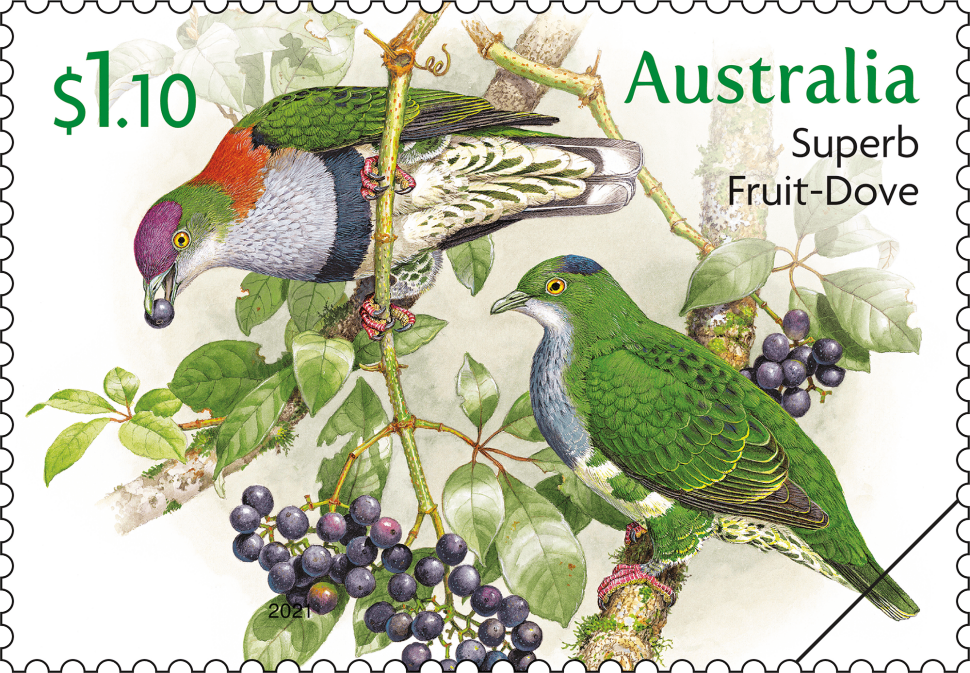Australia is home to 19 species of finches, including mannikins and firetails. Also known as grass-finches, Australia’s finches are separate from the Ploceidae, or true finches, of the Americas, Eurasia and Africa.
Finches are small birds, around 10 to 14 centimetres in length, with short conical beaks and plumage that varies in both colour and patterning. All excepting the aptly named Long-tailed Finch have fairly short tail feathers.
Finches are primarily grass-seed-eating birds that supplement their diet with insects; the rare Blue-faced Parrot-Finch, however, feeds more broadly on seeds from the rainforest canopy and rainforest verge rather than grasslands. Finches are social birds, generally observed in small parties or larger flocks.
The stamps
The stamp designs focus closely on the birds, presenting them on a largely white background to highlight their distinctiveness and beauty. The habitat of each species is indicated through just a suggestion of relevant vegetation.
The stamp illustrations are by Kevin Stead, an Adelaide-based wildlife artist, who has worked as an illustrator for more than 30 years. He paints in watercolour, gouache on paper and in acrylic on canvas.
As well as being a frequent contributor to Australian Geographic magazine, Kevin has illustrated several stamp issues for Australia Post, including Australian Parrots (2005), Species at Risk (2009) and Australian Poultry (2013).
Products released in this issue
- First day cover (blank, gummed, self-adhesive)
- Stamp pack
- Maxicards
- Booklet of 10 x $1 stamps (self-adhesive)
- Roll of 100 x $1 stamps (self-adhesive)
Technical specifications
- Issue date
- 16 March 2018
- Issue withdrawal date
- 30 September 2018
- Denominations
- 4 x $1
- Stamp design
- Kevin Stead
- Product design
- John White, Australia Post Design Studio
- Printer
- RA Printing
- Printer - rolls
- Pemara
- Paper - gummed
- Tullis Russell Red Phosphor
- Paper - self-adhesive
- Securepost MC 90
- Paper roll
- Raf Unik
- Printing process
- Offset lithography. Roll - flexographic
- Stamp size
- 37.5mm x 26mm
- Perforations
- 13.86 x 14.6
- Sheet layout
- Module of 50
- FDI postmark
- Finch Hatton QLD 4756
- FDI withdrawal date
- 18 April 2018
With its blue face, this mainly bright green finch is quite distinctive in appearance. Juvenile birds do not have the blue face and they only have an inkling of what will develop into the scarlet rump and tail areas of adult birds.
In Australia, the territory of the Blue-faced Parrot-Finch is restricted to just the eastern side of Cape York Peninsula, as far south as Cairns. It is known to range between tropical highlands and low-lying areas, and its preferred habitat is tall, lush vegetation adjacent to rainforest and open grasslands.
The Double-barred Finch takes its name from the two narrow black bands across its white chest, the top band encircling much of its face. The white-rumped bichenovii subspecies occurs mainly through Queensland and New South Wales, more numerously away from the dry interior of each state; while the dark-rumped annulosa occurs across the tropical north from the Gulf of Carpentaria to the Kimberley.
The Double-barred Finch occupies a range of habitats, including pandanus, long grasses, open forests, scrublands and grassy woodlands, and it is always in proximity to surface water. It is not an uncommon sight around settled areas
The brightly coloured Star Finch, of which there are two subspecies (ruficauda and clarescens), exhibits much individual variation in its plumage. Although it is coloured mainly olive green with a scarlet face and white spots on its underparts and tail coverts the extent and depth of the scarlet can vary, as can the number and size of the spots.
The subspecies ruficauda, which formerly occupied areas of north-eastern New South Wales and south-eastern Queensland but has declined in its range, has creamy underparts, whereas the subspecies clarescens, occurring over northern Australia and the Pilbara, has a more lemon coloured underbelly. Always close to water, the Star Finch prefers tall, rank grasses, swamp rushes and moist green vegetation.
The Zebra Finch is named for the adult male’s finely barred black-and-white chest and more heavily barred tail. It also has a conspicuous orange ear patch below a blue-grey brow, and a bright orange beak.
This species is by far the most numerous finch in Australia. Its range covers most of continental Australia, including the dry interior. Surface water, however, is crucial to its presence. As the breadth of its distribution suggests, this species occupies varied habitat, from rank grass to spinifex tussocks to mulga woodlands, as well as urban parks and backyards. The Zebra Finch mainly feeds on seeds and insects.
This content was produced at the time of the stamp issue release date and will not be updated.
